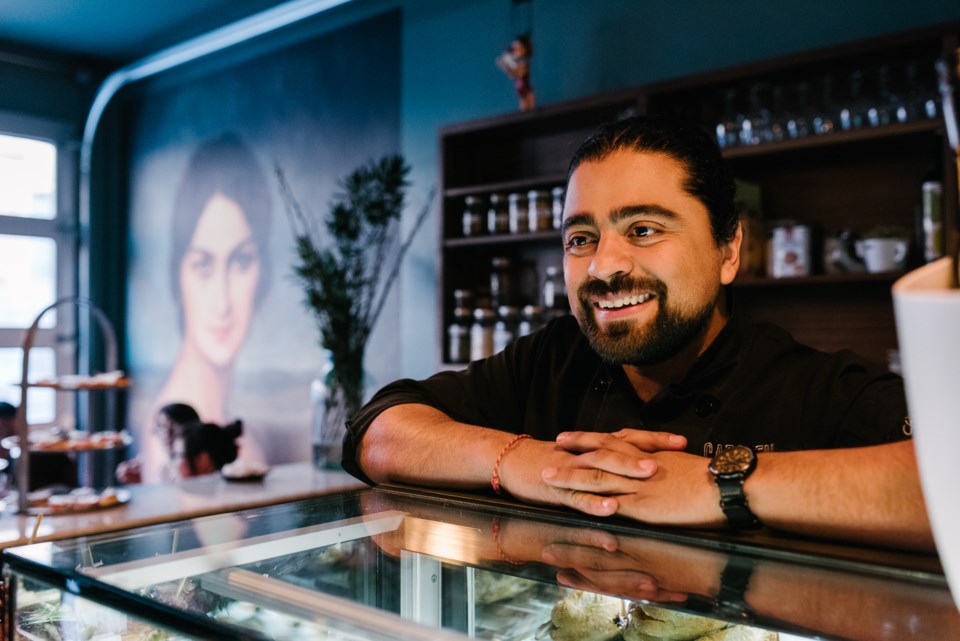Every semester, Toronto chef and culinary instructor Luis Valenzuela asks his students at George Brown College the same simple question: if you have two chefs of similar skill and experience, and one prepares a crêpe and the other a pancake, which dish costs more to make?
“In every semester I’ve taught this class, everyone always answers the crêpes. The reality is pancakes are more expensive because they use substantially more ingredients,” he said. “However, because crepes are French, it seems like it must be fancy or expensive or luxurious.”
It’s the kind of unconscious class association the executive chef of Toronto’s Mad Mexican restaurant often encounters with the food of his homeland.
“The economic problem I sometimes see with Mexican food is that it’s still disregarded as a cheap type of food, or a food that is so easy to make that you only pay a little bit for it,” he said.
It’s a misconception the Guadalajara native is eager to break through at his award-winning restaurant, as host of Gusto TV’s Latin Kitchen, and at cooking demos, like the Culinary Stage event set for Nov. 13 as part of Whistler’s annual food and drink festival, Cornucopia, that will usher diners on a “Journey Through Mexico.” (I’d be remiss if I didn’t mention Valenzuela is also contracted to cook for the Toronto Blue Jays, and once word got out among Latin American players across the league, he began cooking for visiting players when they were in town looking for a little homecooking as well.)
“I thought we would try to do something just a little different, so hopefully [guests] will have a different conversation when they leave,” Valenzuela said.
The five-course menu exemplifies the rich and regionally diverse cuisine of Mexico, and in some cases seeks to deepen diners’ knowledge of more well-known Mexican ingredients, like the Mexico City street food staple, tlacoyos, a blue corn tortilla Valenzuela has stuffed with Oaxaca cheese, green bean purée and crema fresca, or the time-intensive mole verde made from Poblano chiles, roasted zucchinis, squash, spinach and pistachio, which differs in flavour, aesthetics and texture from the more popular spicy chocolate mole sauce commonly eaten at Christmastime.
“It makes a very beautiful, very vibrant green mole. The idea is that it breaks from the stereotype of moles,” Valenzuela said. “People are going to be like, where is the chocolate?”
(In a nod to the influence colonialism can still hold over the food we eat, Valenzuela told me a theory as to why Mexico’s chocolate mole sauce is so beloved. As one legend would have it, before the bloody fall of Tenochtitlan, the modern Aztec capital where Mexico City now sits, Spanish conquistador Hernán Cortés asked to sample some of the Aztec’s finest cuisine, and he was brought a mole, which he purportedly couldn’t get enough of. Like with most colonial accounts, however, take that with a heaping helping of salt.)
In other instances, Valenzuela draws on his own personal memories to craft a dish, like the sweet pineapple tamale that harkens back to his schoolboy days.
“When I was a kid, before we used to go to classes, there was a guy who had what was like a hot dog stand. He was on a bicycle and instead of hot dogs, he would sell tamales with pineapple and guava and strawberries, and he would open a baguette and stuff a tamale inside. So it was carbs on carbs, but it was sweet and delicious for a kid. That’s where the idea comes from,” he explains.
Along with wanting diners to see Mexican food through a new lens, Valenzuela is hopeful Canadians gain a deeper appreciation of the array of multicultural cuisines found within Canada, inflected as they are by generations of new immigrants and the abundance of quality ingredients in our fields and oceans.
“I want people to start thinking about Mexican food, for example, not just as Mexican food. I am a Canadian citizen who loves this country and I want to bring a bit of what I have from my roots to this place and cement them here, grow them here, and make it part of the Canadian landscape. You don’t need to go to Mexico to have amazing Mexican food,” he said.
“Food gets passed down by families through the years, so if my daughter knows that we do a turkey dinner that has some Mexican elements at Thanksgiving, then maybe she’s going to pass it along to her daughter and her daughter after that. Maybe that is going to happen two, three generations down the road, and all of a sudden, a hundred years later, it’s part of the Canadian repertoire.”
Culinary Stage: A Journey Through Mexico is set for noon on Nov. 13 at the Whistler Conference Centre. Tickets are $55, available here.




